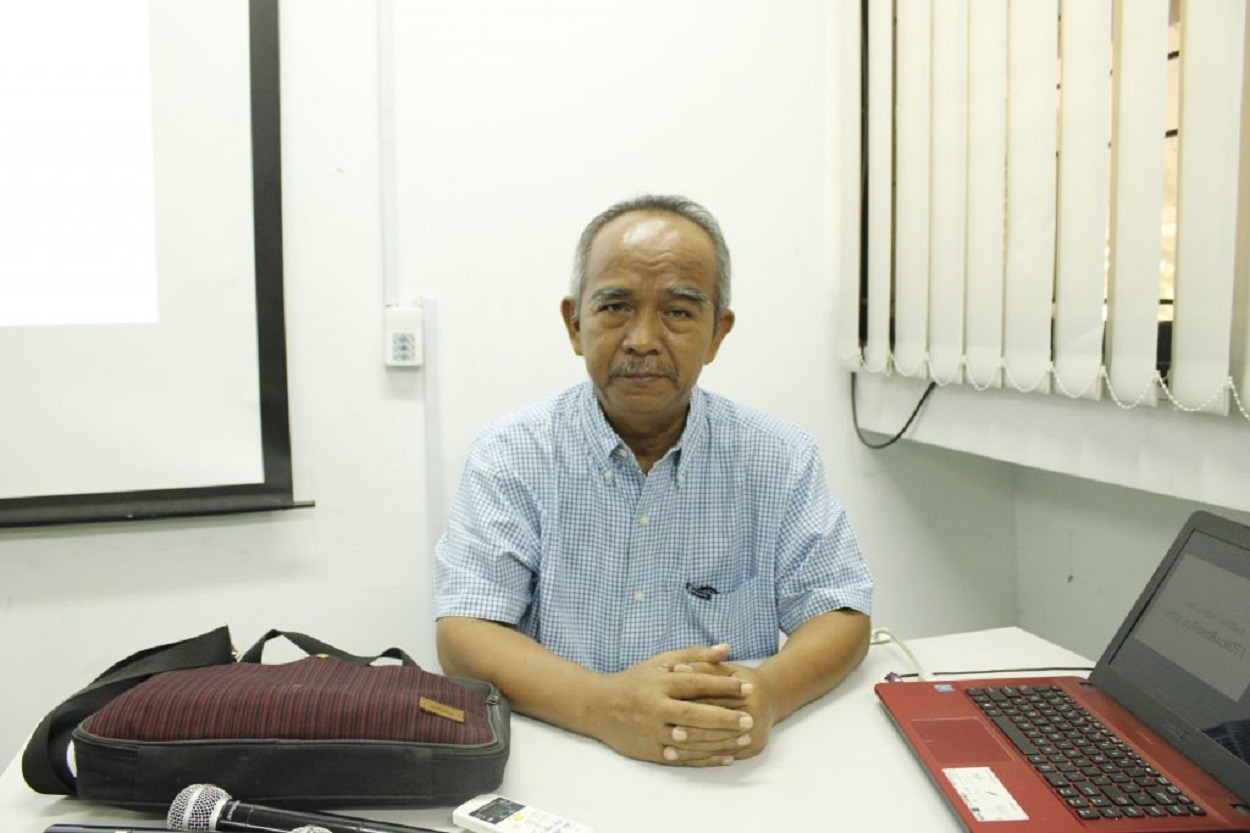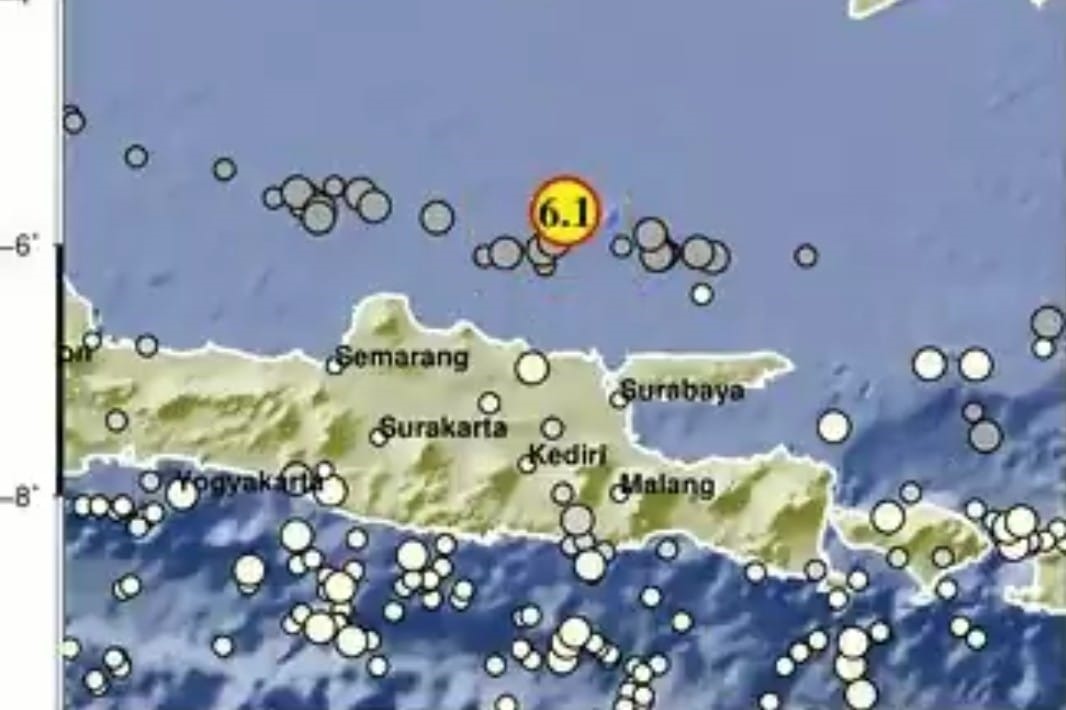An earthquake with a magnitude of 6.1 centered at 132 kilometers in Tuban, East Java (source from BMKG)

Dr Ir Amien Widodo MSi, peneliti senior dari Pusat Penelitian Mitigasi Kebencanaan dan Perubahan Iklim (Puslit MKPI) ITS
ITS Campus, ITS News — An earthquake with a magnitude of 6.5 (latest data, ed.) rocked the northern coastal area of East Java, Friday (22/3) afternoon until this afternoon. The vibration, which was centered 132 kilometers northeast of Tuban, was felt in Surabaya, Malang, Semarang and several other areas in Central Java and East Java. So, why could this happen?
Senior Researcher from the Disaster Mitigation and Climate Change Research Center (Puslit MKPI) Institut Teknologi Sepuluh Nopember (ITS) Dr Ir Amien Widodo MSi said that the shocks that occurred in the marine area were triggered by active faults in the Java Sea. This earthquake with a depth of 10 kilometers also made the area of shaking spread even further to the mainland of Java Island.
According to Amien, shallow depth earthquakes caused by active faults are rare events. The shift and pressure from the two surfaces in the Java Sea causes vibrations on the Modified Mercally Intensity (MMI) III-IV scale. This intensity can cause shocks and cracks in the surface area. “The stronger the intensity scale, the more dangerous the impact felt,” he explained.

Gempa bermagnitudo 6,1 yang berpusat pada 132 kilometer Tuban, Jawa Timur (sumber dari BMKG)
He also explained that the surface shift in the Tuban earthquake occurred horizontally so there was no potential for a tsunami. However, this earthquake will produce several aftershocks with a lower magnitude scale than the first earthquake. “To mitigate this, the earthquake needs to be monitored to find out whether there is pressure that is still active or not,” said the lecturer at the ITS Geophysical Engineering Department.
This ITS Geology expert also revealed that in 2017 the National Earthquake Study Center (PuSGeN) had released 295 active faults in Indonesia that had the potential for earthquakes. Therefore, regional governments adjacent to active faults should carry out inspections such as checking the condition of buildings, surfaces, and the like.
Until this news was released, there was no further information regarding the impact of this medium-scale earthquake. Amien also hopes that the public will be more aware of the earthquake phenomenon that occurs due to this active fault. “The community needs to prepare themselves if earthquakes occur in the future,” he warned. (ITS Public Relations)
Reporter: Muhammad Aulia Zikra
Related News
-
ITS Doctor Initiates World’s First Microexpression-Based Kinship Identification
ITS Campus, ITS News — Institut Teknologi Sepuluh Nopember (ITS) never stops producing outstanding doctoral graduates. Becoming the first
March 27, 2024 00:03 -
ITS Professor Supports Industrial Independence Based on Convection Heat Transfer
ITS Campus, ITS News — PIncreasingly rapid industrial development also demands the availability of energy to run company operations.
March 27, 2024 00:03 -
Supporting Conservation Activities, ITS Launches 1,000 Eco-School Movement Program
ITS Campus, ITS News — In commemoration of National Waste Awareness Day, the Institut Teknologi Sepuluh Nopember (ITS) through
March 27, 2024 00:03 -
ITS Lecturer Highlights Bullion Bank Benefits for Indonesia’s Gold Downstreaming
ITS Campus, ITS News — The launch of Indonesia’s first Bullion Bank or Gold Bank, Wednesday (26/2), marks Indonesia’s commitment
March 27, 2024 00:03
